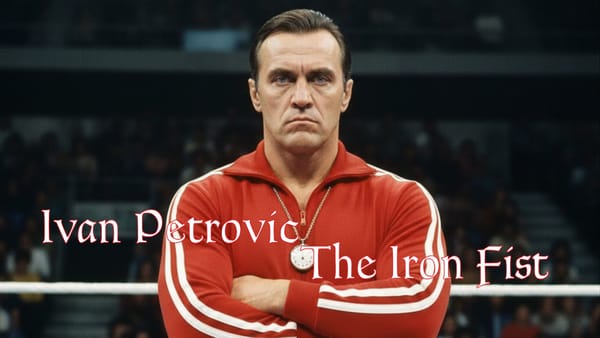Eddie "Desert Eagle" Martinez
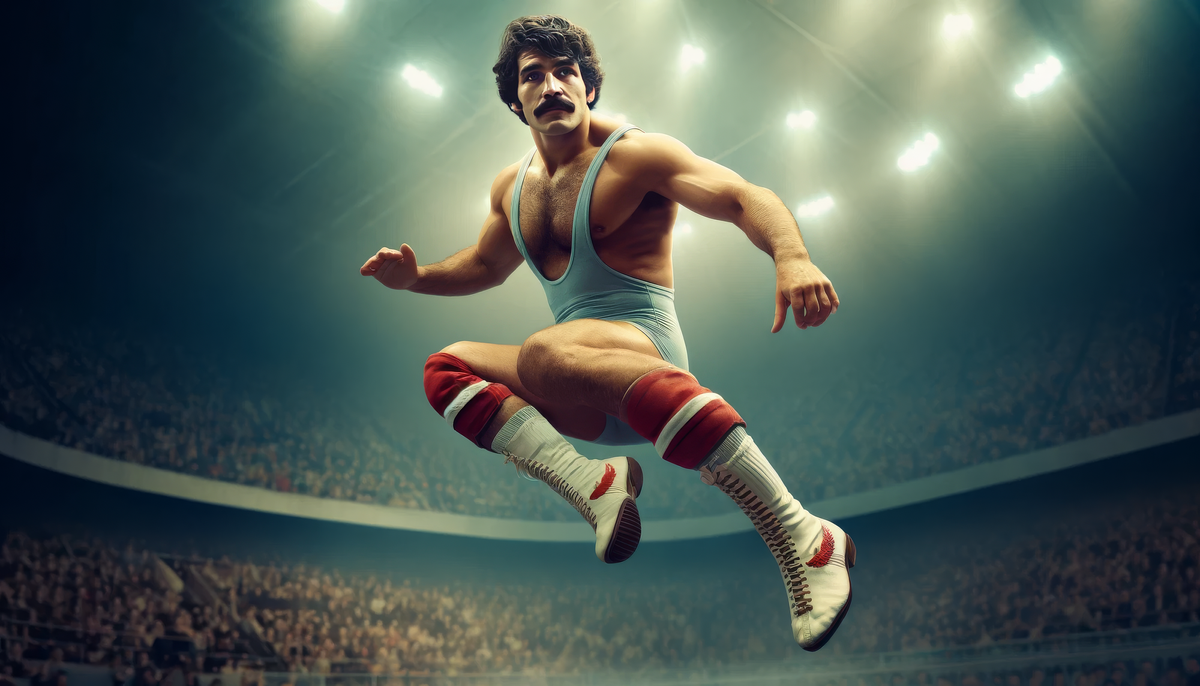
Biography
Born amidst the sun-drenched fields of Camarillo in Ventura County, California, Eddie "Desert Eagle" Martinez was forged in the crucible of a migrant laborer family. From his earliest days, Eddie was imbued with an indomitable spirit of resilience and an unwavering work ethic, bearing witness to the daily trials and triumphs of his family as they toiled tirelessly under the unforgiving sun. This humble backdrop of arduous labor and steadfast determination instilled in him a fiery resolve to transcend the confines of his circumstances. Introduced to the vibrant and dramatic world of lucha libre by his beloved grandfather, Eddie found himself captivated not merely by the sport itself but by its potential as a powerful medium for storytelling and cultural expression.
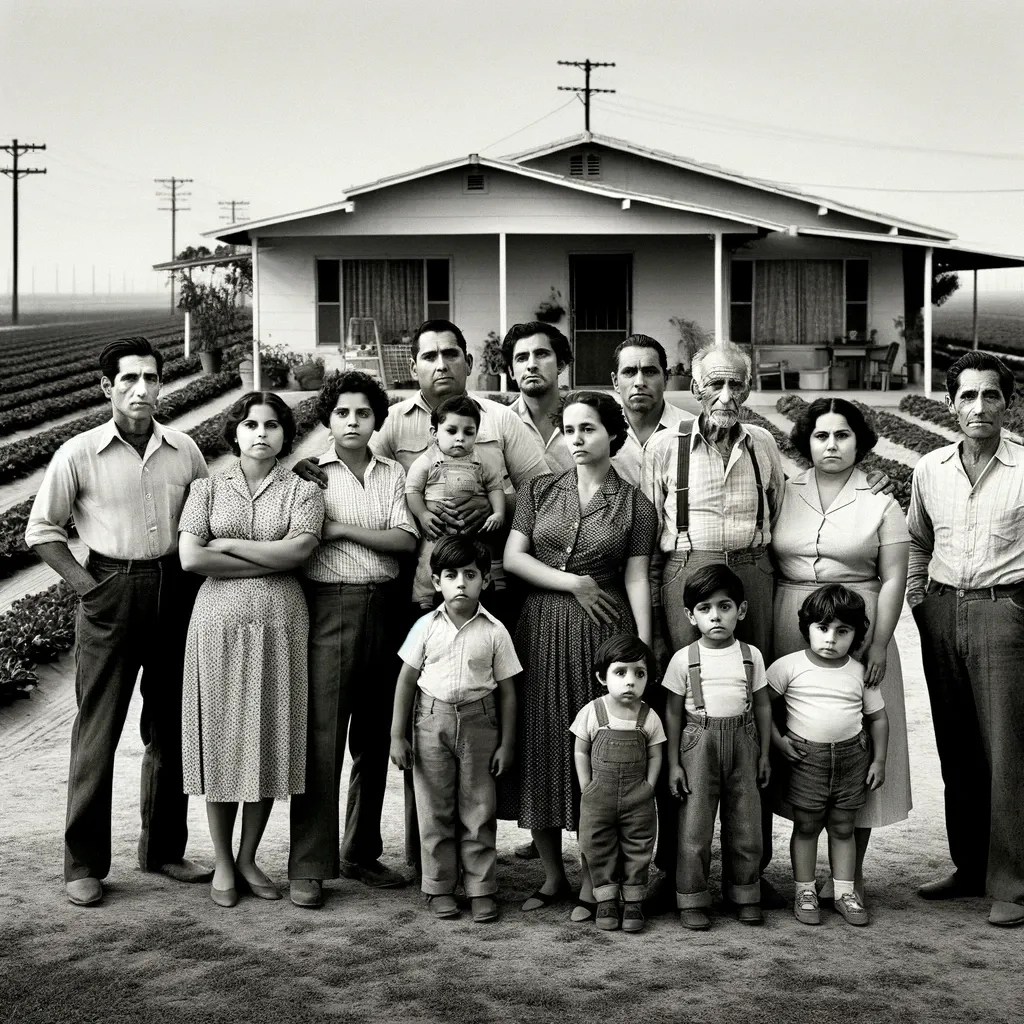
As Eddie navigated the formative years of his life, he encountered pivotal experiences that would indelibly shape his trajectory toward the realm of professional wrestling. The countless hours spent in the sprawling strawberry fields, his hands stained with the fruits of his labor, taught him invaluable lessons of endurance and fortitude. Amidst the hardships, local wrestling matches emerged as a beacon of hope, providing a cherished respite from the daily grind and an event that filled his family and friends with unbridled joy. Witnessing the profound impact that wrestling had on the lives of those he held dear, Eddie's path crystallized before him, fueled by an unwavering determination to pursue a career that would not only allow him to escape the fields but also to bring happiness to countless others.
With an unyielding passion burning within him, Eddie embarked upon his wrestling journey in his teenage years, immersing himself in the rigorous training that would mold him into a formidable competitor. Drawing upon the rich tapestry of traditional wrestling techniques and the gravity-defying moves of lucha libre, Eddie meticulously crafted a unique style that would later become the hallmark of his illustrious career. Through every drop of sweat and every ache in his muscles, Eddie's vision remained clear—to rise from the humble fields of Camarillo and etch his name in the annals of wrestling history, all while bringing joy and inspiration to the hearts of his adoring fans.
Rise to Fame in the GWA
Eddie Martinez's ascent to stardom within the Great Western Wrestling Alliance (GWA) commenced with his electrifying debut match in 1966, where his distinctive style and magnetic persona instantly captivated the hearts and minds of fans and promoters alike. His rise was nothing short of meteoric, punctuated by pivotal victories and the rapid cultivation of a devoted fan base who were irresistibly drawn to his high-octane performances and compelling underdog narrative. Eddie's crowning moment arrived in 1970 when he clinched his inaugural GWA Pacific Coast Championship, a triumphant achievement that firmly established him as a formidable force to be reckoned with in the wrestling realm.
However, Eddie's path to greatness was not without its trials and tribulations. He found himself pitted against seasoned veterans of the squared circle and often had to grapple with the insidious specter of prejudice, a consequence of his unique background and unorthodox wrestling style. Yet, through unwavering determination and indomitable spirit, Eddie's perseverance yielded a momentous victory during the legendary Clash at the Coliseum in 1975. In this defining moment, he not only secured the GWA World Heavyweight Championship but also garnered the respect and admiration of both his adoring fans and his fellow wrestlers. This watershed event marked a pivotal turning point in Eddie's career, unequivocally affirming his rightful place among the elite of the wrestling world and emphatically demonstrating that his rich heritage and high-flying style were not hindrances but rather invaluable assets that set him apart from the rest.
Memorable Rivalries and Matches
Eddie "Desert Eagle" Martinez's wrestling career was an epic tapestry woven with intense rivalries, legendary matches, and defining moments that indelibly captured the hearts and imaginations of fans across the nation. One of the earliest and most scintillating highlights was his participation in the Rumble on the Frontier in August 1969. As a relative newcomer, Eddie set the arena ablaze with his high-flying style and indomitable resilience, making an indelible impact by eliminating several seasoned wrestlers before finally being ousted by the formidable "Mountain Man" Mark Jensen, igniting the sparks of one of his most enduring and celebrated rivalries.
Another defining moment that etched itself into the annals of wrestling history came in 1972 during the Soul Power Olympic Brawl held in the pulsating heart of Los Angeles, where Eddie found himself locked in an epic confrontation with "The Technician" Thomas Reed. Renowned for his methodical and precise wrestling style, Reed stood as the perfect antithesis to Eddie's explosive approach, creating a mesmerizing clash of contrasting techniques. Their match unfolded as a masterclass in style-versus-style strategy, with Eddie employing his lightning-quick agility and gravity-defying moves to counter Reed's technical prowess. The breathtaking encounter, which stretched on for nearly forty minutes, reached its electrifying crescendo when Eddie executed a flawlessly timed Eagle Dive, securing a victory that was hailed as one of the most exquisite performances of his illustrious career.
Eddie's rivalries with the imposing "Steel Hammer" Hank Roberts and the relentless "Mountain Man" Mark Jensen were particularly noteworthy, etching themselves into the fabric of wrestling lore. His encounters with Hank Roberts, a behemoth known for his brute strength and no-nonsense approach, unfolded as classic David vs. Goliath battles that tested the very limits of human endurance. These matches were not merely physical contests but also intense psychological struggles, as Eddie often employed his lightning speed and cat-like agility to outmaneuver the much stronger Roberts. Their rivalry reached its apex during a series of matches in 1973 that pushed Eddie to the brink, demanding every ounce of his endurance and strategic acumen, ultimately elevating his reputation as a master tactician and cementing his status as an unwavering crowd favorite.
Meanwhile, Eddie's ongoing feud with the indomitable "Mountain Man" Mark Jensen was a rivalry forged in the crucible of their very first encounter at the Rumble on the Frontier. Their clashes were characterized by a series of brutal and intense matches that often pushed Eddie to the very precipice of his physical and mental limits. The pinnacle of their epic feud unfolded during the Clash at the Coliseum in 1975, a match that not only settled their long-standing scores but also solidified Eddie's position as one of the most formidable wrestlers in the GWA. Eddie's hard-fought victory over Jensen, set against the electrifying backdrop of a packed Los Angeles Coliseum, stands as one of the most iconic and celebrated moments in GWA history, revered for its raw emotion, dramatic storytelling, and the sheer physicality displayed by both warriors.
Through these legendary rivalries and unforgettable matches, Eddie "Desert Eagle" Martinez not only defined his own career but also left an indelible mark on the very fabric of the wrestling world. His uncanny ability to transcend typical wrestling narratives and captivate fans with his magnetic charisma and unparalleled skill transformed his career into a series of epic chapters forever enshrined in the annals of professional wrestling history.
Persona
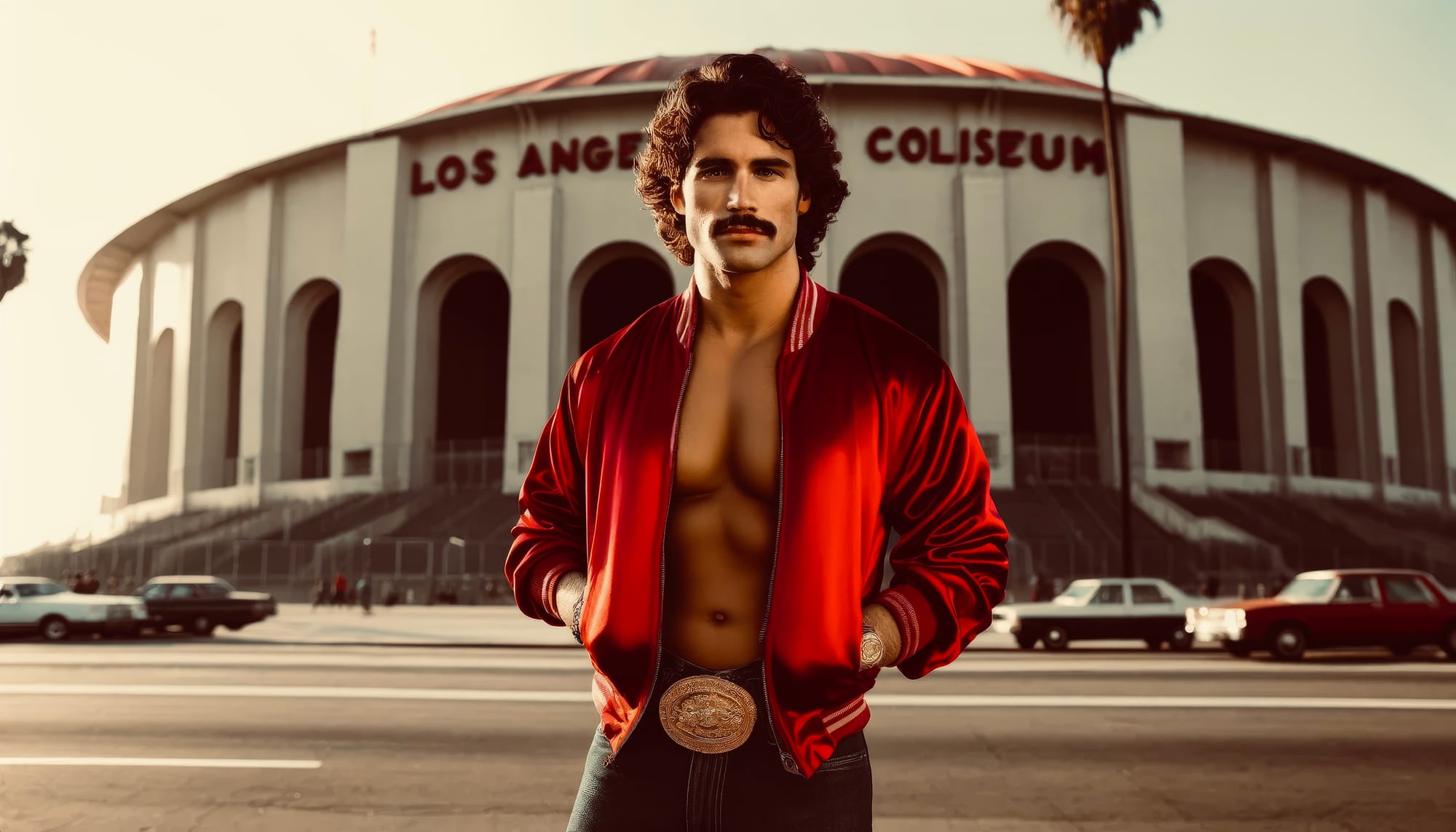
Eddie "Desert Eagle" Martinez's persona in the ring as a classic Hispanic babyface struck a profound chord with fans from all walks of life. His heroic and noble character, combined with an unwavering dedication to fighting with honor, elevated him to the status of a beloved icon within the GWA. Eddie's approach transcended mere performance; he imbued his matches with a genuine warmth and spirited enthusiasm that resonated with the vibrant and celebratory essence of traditional lucha libre. This distinctive fusion of charisma and authenticity played a crucial role in shattering cultural stereotypes that had long permeated the sport.
Beyond the confines of the squared circle, Eddie's impact was equally significant. He consistently engaged with fans and fellow wrestlers alike, exuding an approachable and respectful demeanor that endeared him to the wrestling community as a whole. His humble attitude, even in the face of his burgeoning fame, was not merely an extension of his in-ring persona but a fundamental aspect of his character, shaped by his formative experiences in the agricultural fields of Camarillo, California. Eddie's interactions were often interwoven with poignant anecdotes from his early life and the invaluable lessons instilled in him by his family, further cementing his status as a relatable and inspirational figure.
Moreover, Eddie's persona extended far beyond the realm of wrestling, permeating his public appearances and philanthropic endeavors. He frequently utilized these platforms to advocate for the importance of perseverance, cultural pride, and giving back to one's community. These themes were not only omnipresent in his eloquent speeches but also manifested in his tangible actions, such as organizing wrestling clinics for underprivileged youth and actively participating in cultural festivals. Through these noble pursuits, Eddie "Desert Eagle" Martinez transcended the role of a mere entertainer; he harnessed his influence to cultivate a profound sense of community and champion the values he held sacrosanct. In doing so, he transformed his persona into a luminous beacon of positive change, leaving an indelible mark both inside and outside the hallowed halls of the wrestling arena.
Wrestling Style
Eddie "Desert Eagle" Martinez's wrestling style is a captivating blend of traditional grappling and the high-flying theatrics typical of lucha libre. This unique combination allowed him to stand out in the competitive landscape of the Great Western Wrestling Alliance (GWA). His ability to seamlessly integrate agile maneuvers with classical wrestling techniques made his matches exhilarating spectacles, beloved by fans for their unpredictability and flair. This distinctive style not only showcased his physical capabilities but also his deep understanding and respect for the art of wrestling, bridging cultural divides and bringing a fresh dynamism to the sport.
One of Eddie's most iconic moves in the ring is the Eagle Dive, a high-risk, high-reward maneuver that sees him launching from the top rope to land on his opponent with precision and force. This move, characterized by its aerial grace and striking impact, quickly became a fan favorite and was a testament to Eddie’s daring in-ring philosophy. The Eagle Dive not only highlighted his luchador training but also his courage to embrace the inherent dangers of such a style, all in the pursuit of entertaining the audience and delivering unforgettable matches.
Another key element of his repertoire was the Camarillo Twist, a spinning hurricanrana that demonstrated his agility and technical prowess. This move involved Eddie using the momentum of both wrestlers to execute a complex aerial rotation, culminating in a pinning maneuver that often caught his opponents off guard. The Camarillo Twist was not just effective as a competitive technique but also served as a nod to his heritage and the vibrant wrestling culture that shaped him, symbolizing his roots in Camarillo, California, where he first dreamed of becoming a wrestler.
Eddie's finishing move, the Desert Storm, a tornado DDT, was the culmination of his in-ring strategy and skill. This devastating move involved Eddie spinning his opponent around before driving their head into the mat, a maneuver that required precise execution and timing. The Desert Storm was renowned for its effectiveness and dramatic presentation, often securing Eddie crucial victories in high-stakes matches. It encapsulated his in-ring philosophy: a blend of spectacle, precision, and a relentless pursuit of victory, making it a fitting hallmark of a wrestler who was as much a performer as he was a fierce competitor.
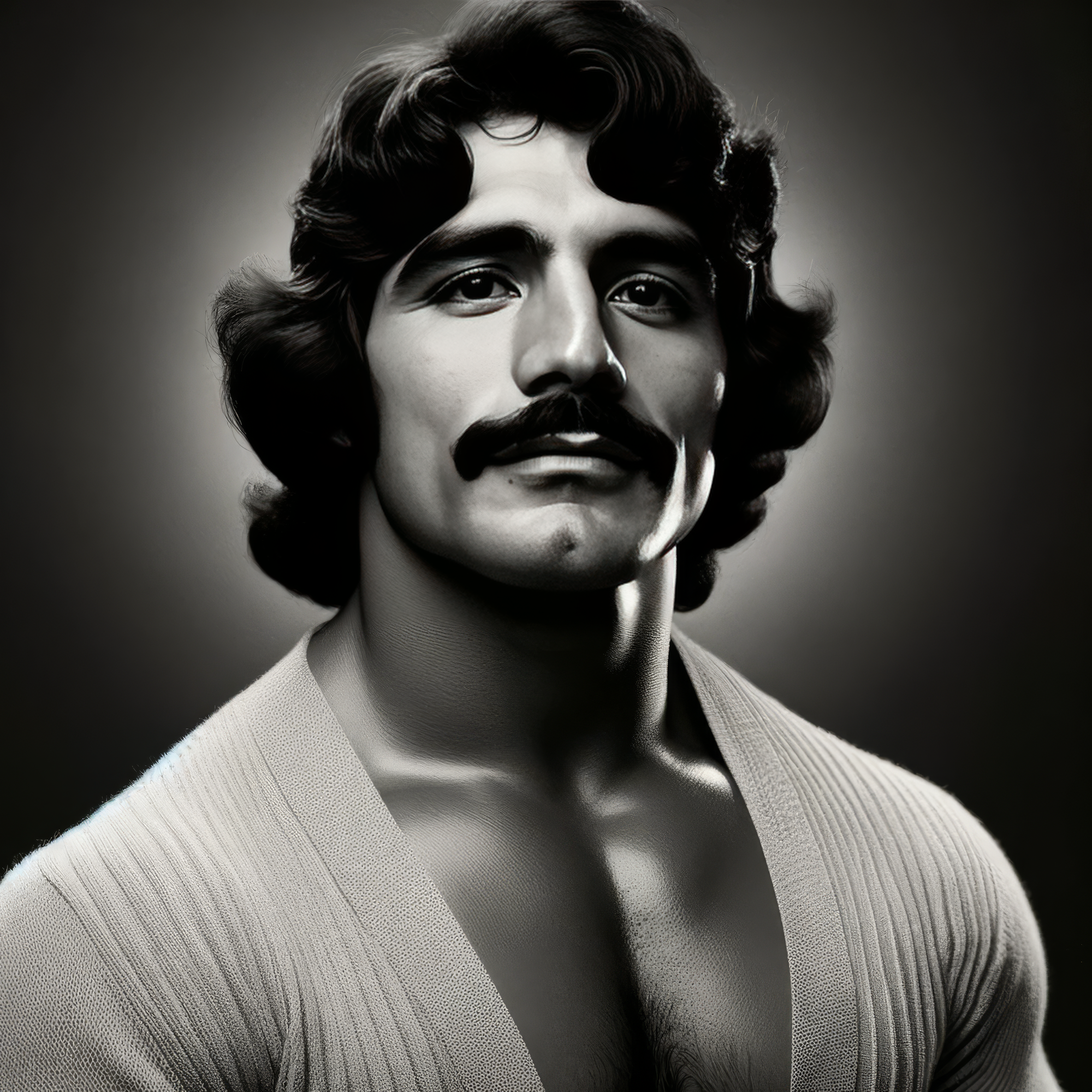
Appearance
Eddie "Desert Eagle" Martinez is an imposing figure, his muscular physique a testament to the countless hours spent honing his craft in the wrestling ring. At an impressive 6 feet tall, his sculpted frame exudes an aura of strength and resilience, reflecting the dedication and discipline that define his career. His dark, wavy hair cascades around his chiseled features, lending an air of classic luchador charm to his rugged handsomeness. The meticulously groomed mustache, a signature element of his appearance, adds a touch of charisma and flair, setting him apart as a true icon in the world of professional wrestling.
When the spotlight shines upon him in the ring, Eddie transforms into a living embodiment of his heritage and wrestling persona. Light blue trunks, reminiscent of the serene Californian skies that shaped his early years, adorn his powerful legs, while vibrant red knee pads not only provide essential protection but also serve as a striking visual representation of the fiery passion he brings to each match. His pristine white wrestling boots, intricately adorned with majestic eagle motifs, pay homage to his ring name "Desert Eagle" and stand as a constant reminder of the lofty aspirations and soaring heights he strives to achieve in his illustrious wrestling career. This meticulously curated ensemble seamlessly blends functionality with visual allure, ensuring that Eddie remains both agile and captivating as he showcases his high-flying maneuvers and electrifying performances.
Beyond the confines of the ring, Eddie's street style reflects his laid-back demeanor and unwavering confidence. He effortlessly combines well-fitted jeans with vibrant shirts, their bold prints serving as an extension of his lively personality and deep-rooted cultural pride. A cherished staple in his wardrobe is his red satin bomber jacket, often worn open to reveal a bare chest or a light blue tank top beneath, adorned with a striking red eagle print that subtly echoes his in-ring persona. This carefully chosen attire not only prioritizes comfort but also allows his wrestler identity to seamlessly intertwine with his everyday appearance, making Eddie "Desert Eagle" Martinez a figure who wore his persona with unwavering pride, whether he's flying around the ring or simply navigating the world outside of it.
Ring Entrance
Eddie "Desert Eagle" Martinez's ring entrances were a quintessential showcase of 1970s wrestling flair, perfectly encapsulating his magnetic persona and the theatrical essence of his performances. Depending on the audience he was performing for, Eddie masterfully tailored his entrance to resonate with the crowd. For predominantly white audiences, he would emerge from the backstage area to the infectious sounds of "Eagle Rock" by Daddy Cool. The upbeat and catchy tune served as the perfect anthem for Eddie's dynamic and high-flying wrestling style, igniting a surge of anticipation among the spectators who eagerly awaited the impending spectacle.
However, when performing for more Hispanic audiences, Eddie would opt for a different musical choice—the electrifying rhythms of "Oye Como Va" by Santana. This strategic selection allowed him to forge an instant connection with the Latino fans, tapping into their cultural heritage and creating an atmosphere of shared excitement and pride. The music's energy was palpable, setting the stage for an unforgettable performance that celebrated both Eddie's wrestling prowess and his cultural roots.
Regardless of the music choice, Eddie's visual presentation remained consistently striking. Clad in his iconic red satin bomber jacket, often left casually unzipped to provide tantalizing glimpses of his wrestling attire beneath, he exuded both style and a readiness for battle. This simple yet effective visual presentation made a resounding statement: Eddie was not merely there to compete; he was there to captivate and conquer. As he made his way towards the ring, Eddie's interactions with the fans were a central part of his entrance. From waving to the crowd to extending handshakes, he forged a connection that was both intimate and electrifying. This direct engagement with the audience was a hallmark of Eddie's ability to dissolve the boundaries between performer and spectator, transforming each entrance into an unforgettable experience.
The visual elements of Eddie's entrance, while devoid of the elaborate light shows or pyrotechnics that would become commonplace in later decades, were nonetheless impactful in their authenticity and simplicity. The spotlight remained firmly on Eddie's physical presence and innate charisma, which alone were more than sufficient to command the undivided attention of all those in attendance. His energetic approach, seamlessly complemented by the thematic music and distinctive attire, served as a testament to his undeniable star quality. In an era where the spectacle of wrestling was deeply rooted in the charisma and storytelling prowess of its stars, Eddie "Desert Eagle" Martinez's entrances stood as a perfect embodiment of the sport's golden age, capturing the essence of a time when larger-than-life personalities reigned supreme, and cultural connections were celebrated and embraced.




